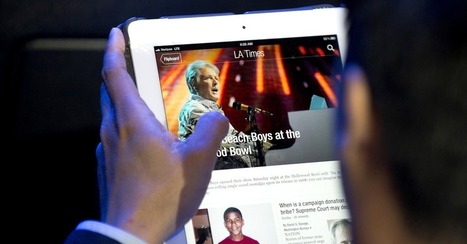Twitter may not end up buying a media company, but its interest in Mic and Circa is just one battle in an ongoing war over the future of news.
Every social-media platform, from Facebook to Twitter to Snapchat, is trying to find a way to win control over content and its distribution. Even Pinterest is hiring a media team in New York to chat with publications about how they can partner together, a social-media executive told Business Insider....
Research and publish the best content.
Get Started for FREE
Sign up with Facebook Sign up with X
I don't have a Facebook or a X account
Already have an account: Login
Social marketing, PR insight & thought leadership - from The PR Coach
Curated by
Jeff Domansky
 Your new post is loading... Your new post is loading...
 Your new post is loading... Your new post is loading...
|
|













Are social media going to turn into mass media?